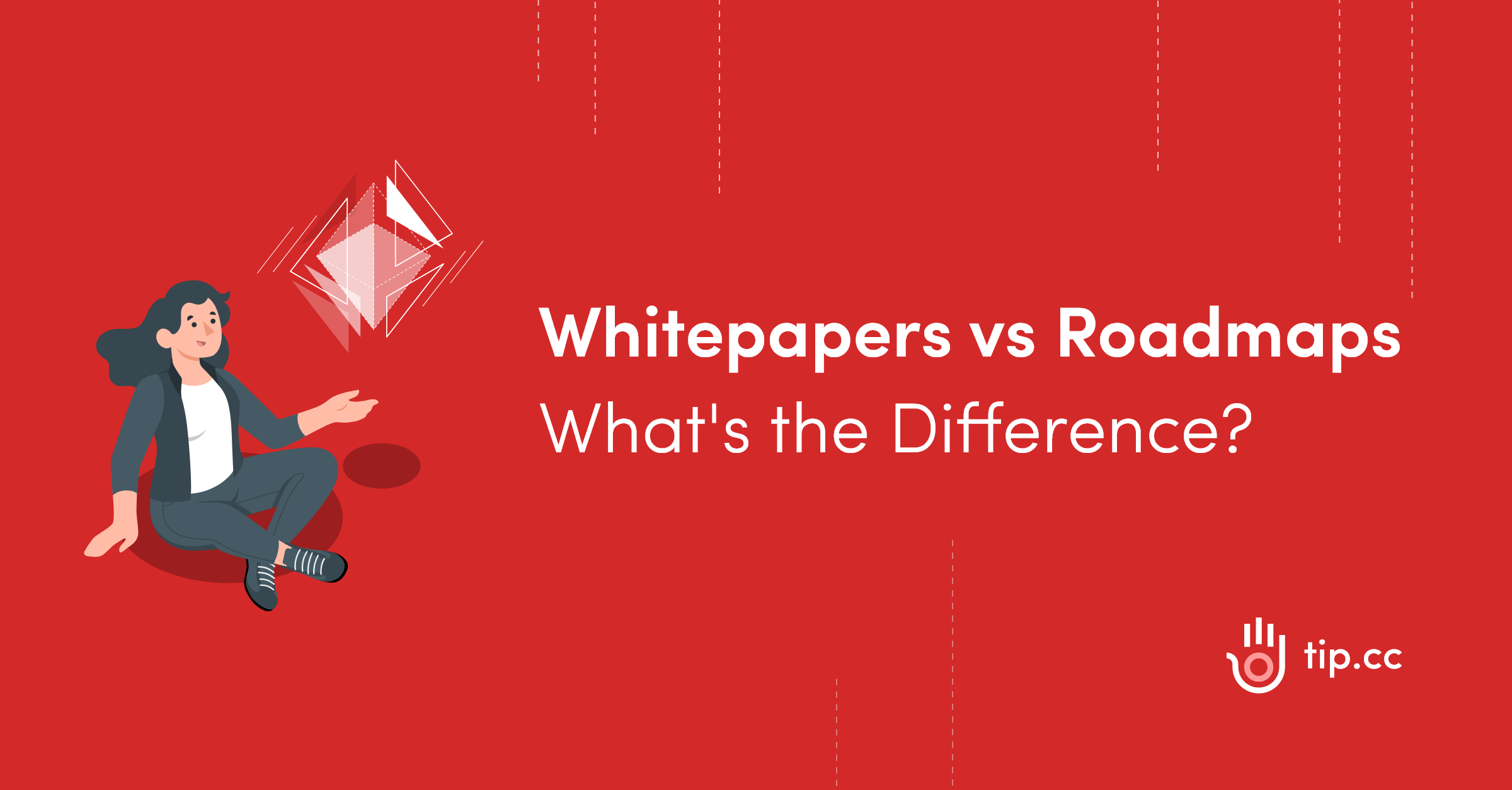Do you read a crypto’s whitepaper and roadmap before deciding to invest in the project? These are important tools that can tell you all about the currency you are interested in. In fact, roadmaps and whitepapers can determine the success or failure of their projects.
So what exactly are these two tools and what do they do? Many people get the terms “whitepaper” and “roadmap” confused and use them interchangeably. Even though both are closely related, they serve different purposes.
Let’s dive into each of these tools and learn what’s the difference between them and how you can use them to your advantage.
What is a Crypto Roadmap?
Just as the name suggests, a roadmap is a map! When planning a journey, you refer to a map to understand which road to take, how long it will take to get there, and the milestones you’ll cross along the way.
In a similar way, a crypto roadmap is a plan that outlines the project’s key performance indicators within a period of time. While a whitepaper is a theoretical document, a roadmap is much more tangible, and lists down specific things like what the project is going to do, whether it’s looking for partnerships, which exchanges it will be listed on, or if it plans to have smart contracts, etc.
The most important feature you will notice on the roadmap is its timeline, which will tell you about the project’s short, medium, and long-term goals. A standard crypto roadmap must showcase the time frame in which it intends to achieve its set objectives. It will either be presented as a chronology of dates or simply as phases without any mention of dates. For e.g., Cardano’s roadmap is divided into five phases – foundation, decentralization, smart contracts, scaling and governance. It gives a general sequence of events without promising any dates. In the volatile crypto world, timelines can vary regularly, so if a project is not giving specific dates, don’t hold that against it!
Another thing you’ll notice in a roadmap is that it will give a sense of priority to certain tasks. If you look at Basic Attention Token’s (BAT) roadmap, you’ll notice that it focuses on adoption. It talks about mass adoption and use of crypto and DeFi through the Brave Wallet, with features such as Brave Rewards, custodial accounts, and options for buying crypto with fiat payment methods.
How to Use a Roadmap
The first thing to check is if the stated goals line up with your interests. For e.g., if you are interested in buying a sustainable and green cryptocurrency, see if the roadmap talks about a low energy footprint. By contrast, if its focus and use case are different to your interests, then the crypto may not be for you!
The second way to check is to look for internal validation. Did it meet its past goals? Did it deliver on its promises? Did it roughly stick to its schedule? If it deviated from its schedule, was it transparent in its communication to explain the reason? These points can be very useful for measuring the success of the project.
What Is a Crypto Whitepaper?
As opposed to a roadmap, which is specific, a whitepaper is a document that outlines the broad vision behind the project. It explains why the cryptocurrency was created and what market problem it aims to solve.
Almost all crypto projects begin with a whitepaper. The first, and the most famous whitepaper is of Bitcoin, which came out in 2008. The document introduced the world to a decentralized financial system that could be run without intermediaries like banks. The idea of safe and private peer-to-peer transactions revolutionized the crypto world and spurred a trillion-dollar industry!
How to Analyse a Crypto Whitepaper
A standard crypto whitepaper should answer some key questions:
What is the project?
Whitepapers are comprehensive all-in-one documents and are full of technical jargon and buzzwords. They can seem confusing to most readers. You’ll need to sift through the information to understand what the project actually does. Analyze if the goals are realistic or too good to be true.
Does it solve any problems?
Check if it is addressing a problem in the market. Does it aim to solve any real-world user issues? This is an essential factor to consider as it can most likely predict the long-term sustainability of the project.
How does it work?
Next, see how it works - what technology will it use, how many coins will be issued, what will be the vesting period, etc.
How to Identify Good Whitepapers and Roadmaps
Unsuspecting users often fall prey to scam coins and fake projects. Here are some simple tips you can follow to identify a good crypto whitepaper and roadmap:
- The paper must be factual. It must contain facts and figures to back up its claims and should not look like an advertisement. If the whitepaper looks highly promotional without offering any facts and figures, it is safe to avoid such projects.
- The whitepaper should provide a tangible solution to an identified problem the project seeks to solve. It shouldn’t just be all about vague promises of wealth creation.
- The content of the roadmap should be specific. Ambiguity is not a good sign in a roadmap. While the white paper answers the “what” question, the roadmap should answer “how” and “when”.
The roadmap should be centered on a single main theme rather than several unrelated discourses.
Ultimately, despite solid whitepapers and roadmaps, it is still hard to predict where a crypto project will be 5-10 years down the line. Apart from these tools, things like a stable funding source, a growing team, and a working product are good indicators of a bright future.


